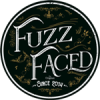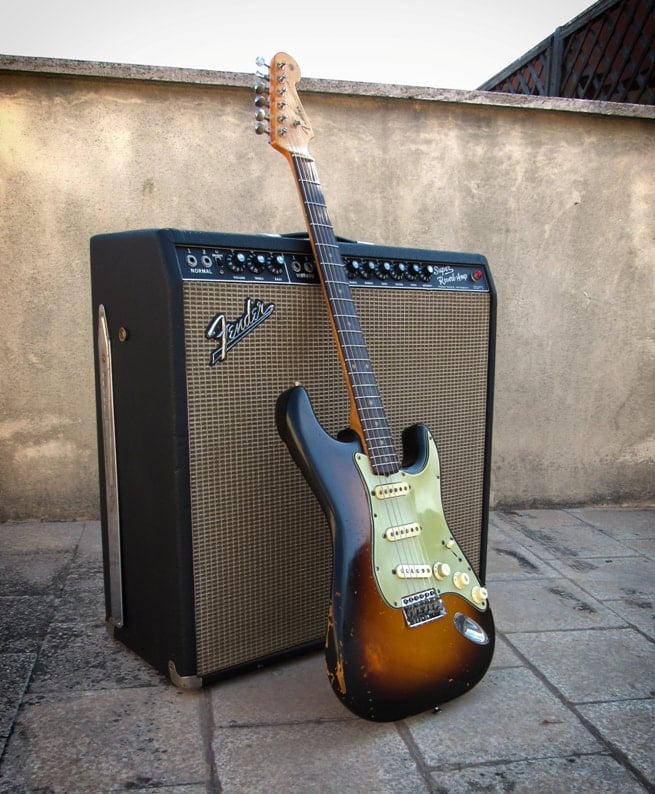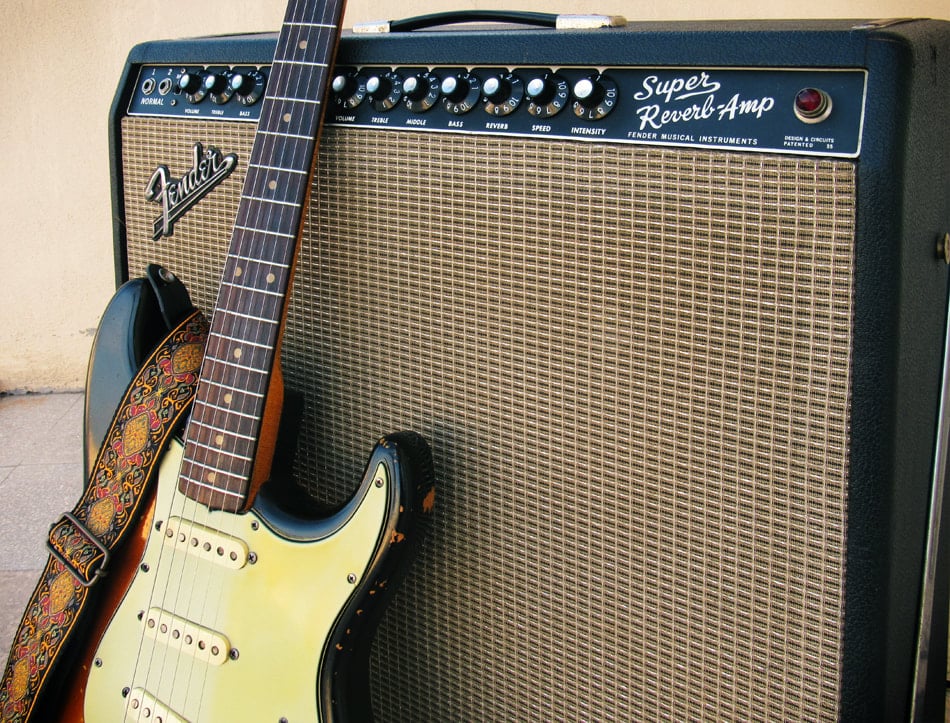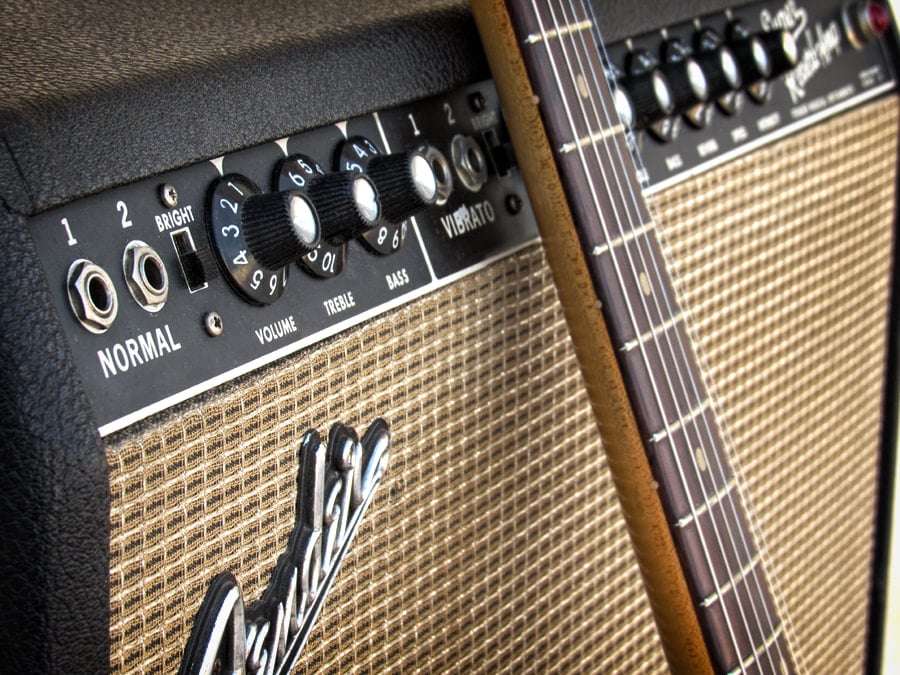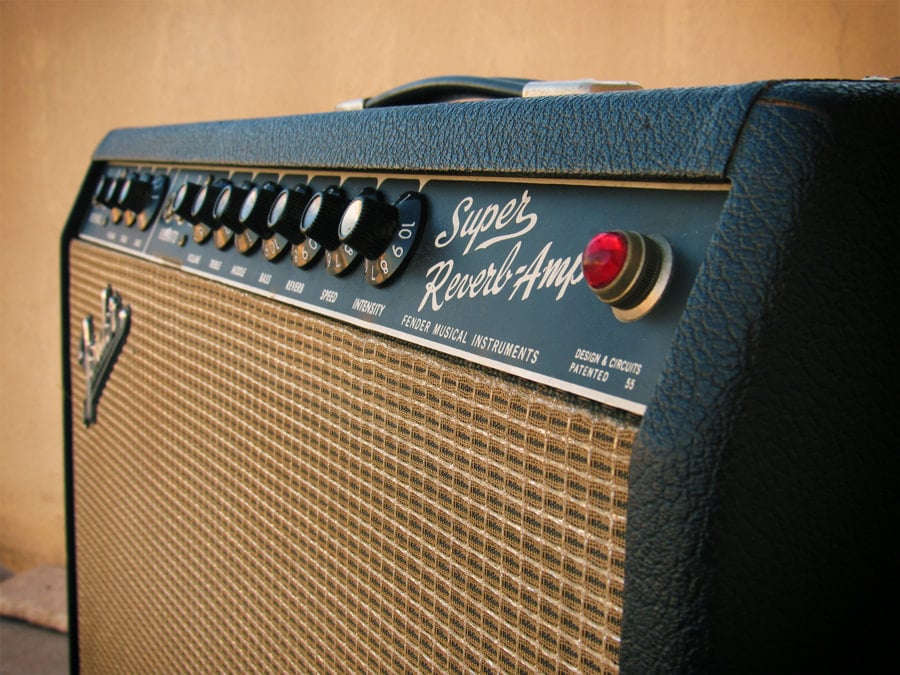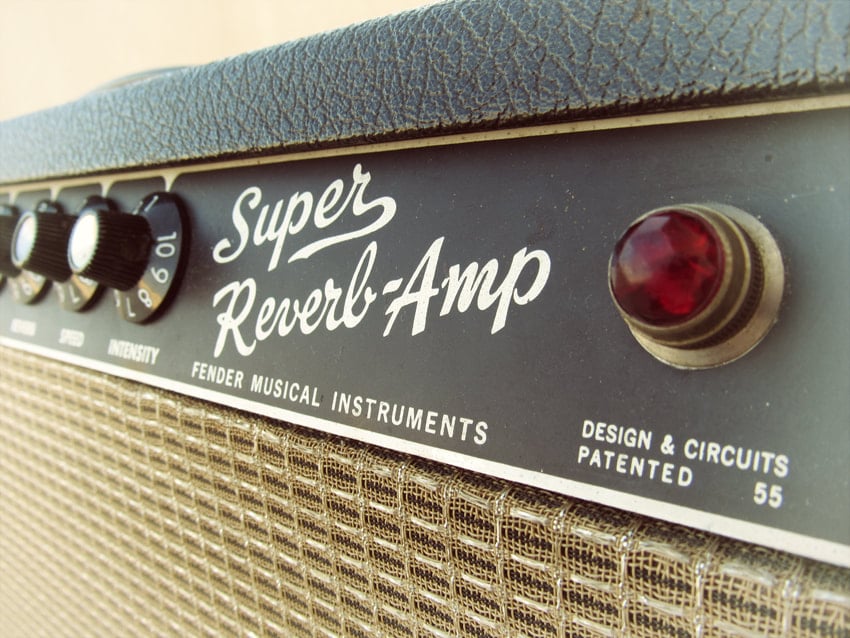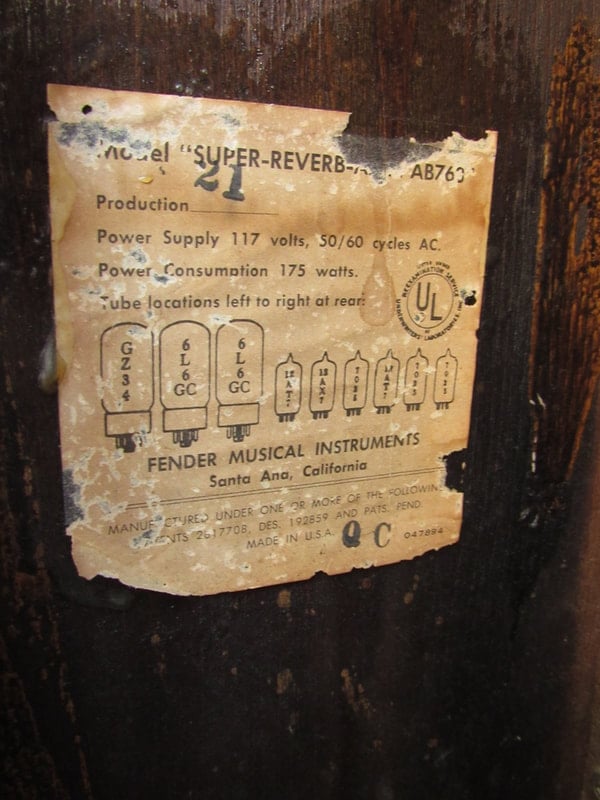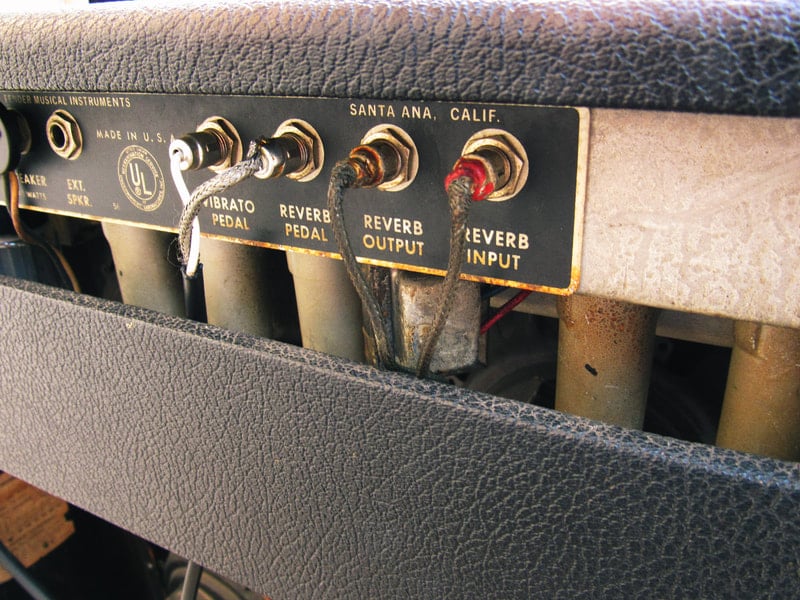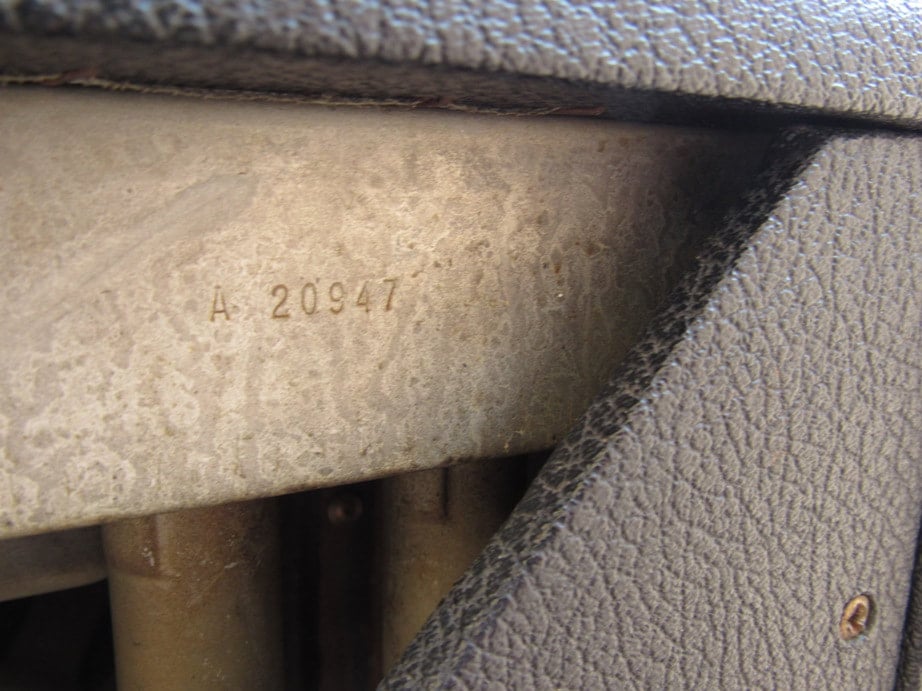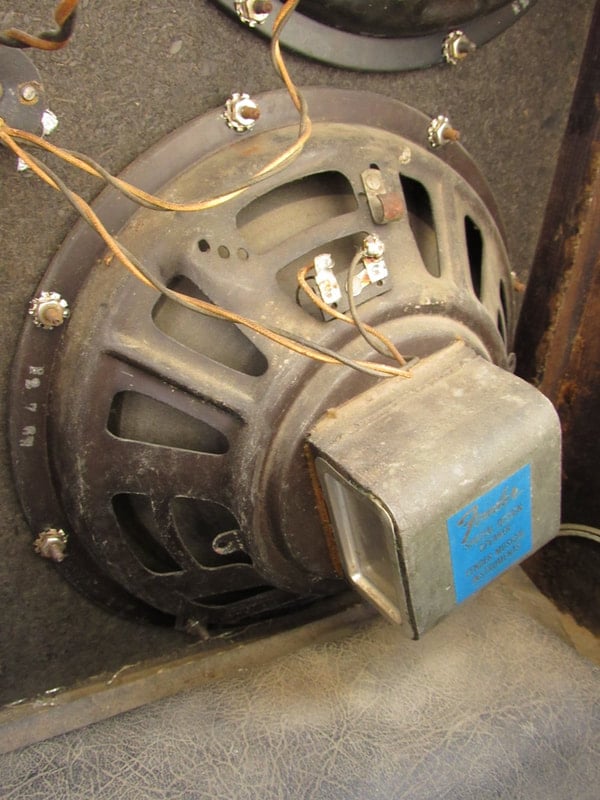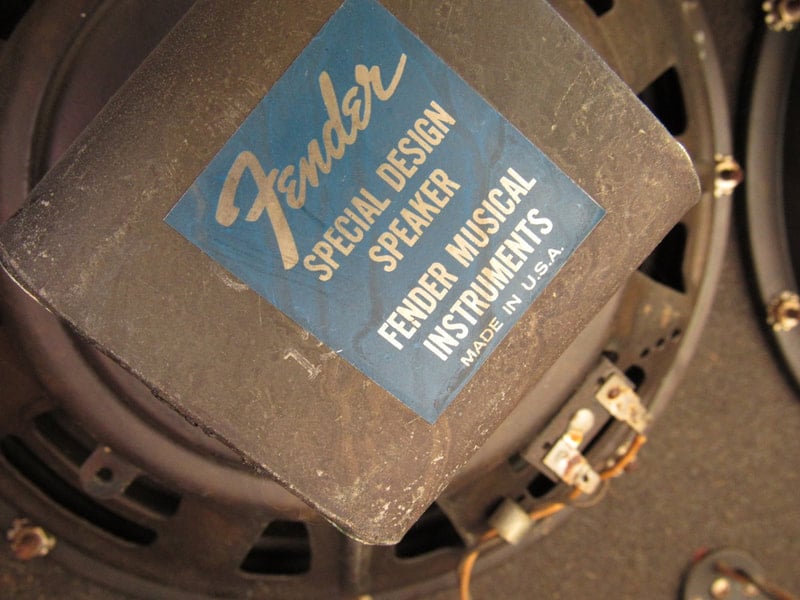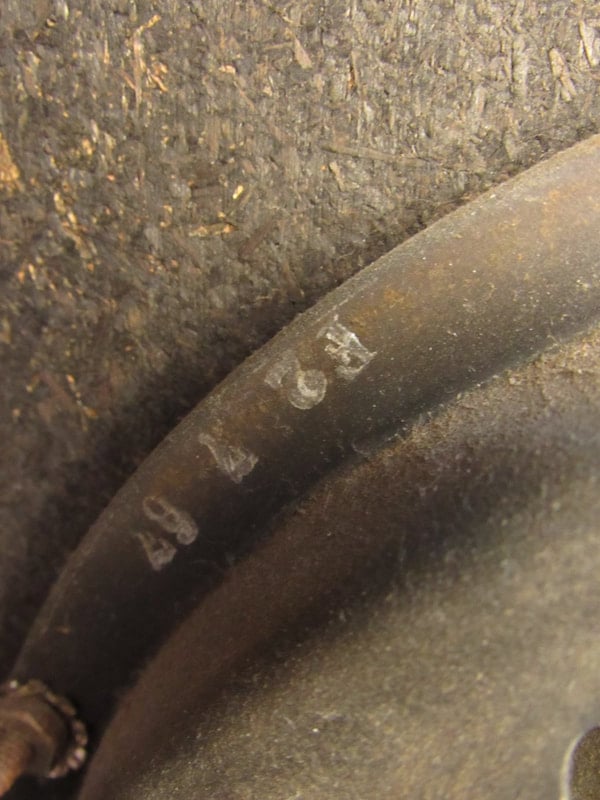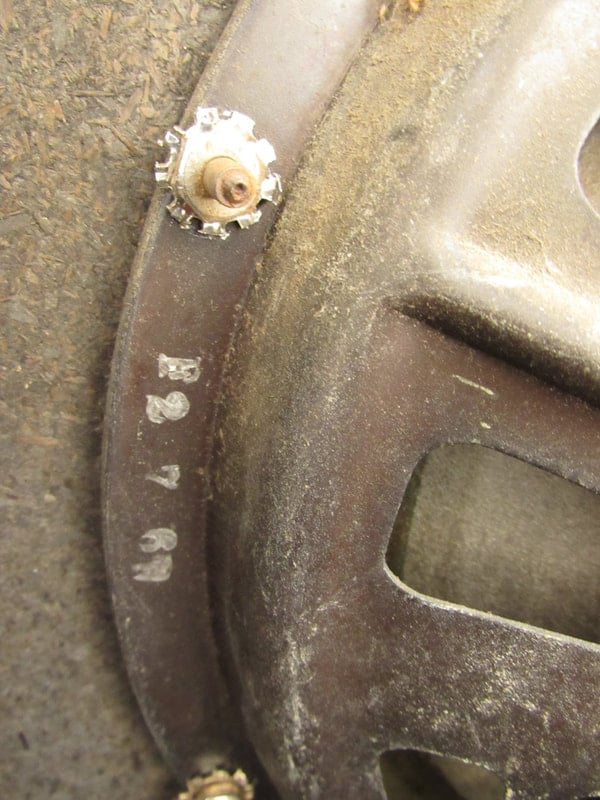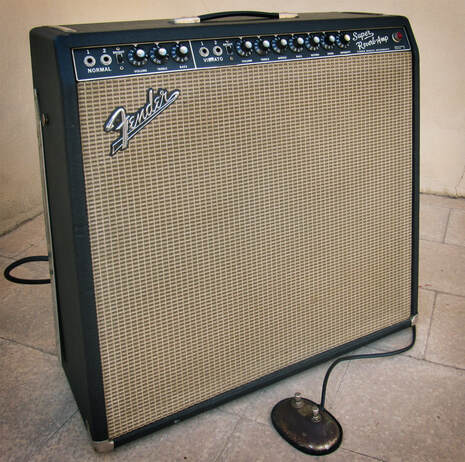
The Super Reverb was a Fender tube amplifier produced from late 1963 to 1981, featuring a black tolex cover.
Based on the colour of the front panel, Super Reverbs are divided into Blackface, in production until 1967 and characterized by AA763 and AB763 circuits and 40 watts power, and Silverface, in production between 1967 and 1980. The circuits used on Silverface were initially the AB763 or AB568, and their power output was 45 watts - increased to 70 watts in 1977.
From the end of 1980 the Super Reverb returned to the aesthetics of the Blackface, but the circuitry remained that of the Silverface.
Blackfaces are widely regarded as the most versatile, efficient and robust amplifiers ever made by Fender.
The Super Reverb featured four 12AX7 valves in the preamp, two 12AT7s for the effects and a 5AR4 (GZ34) rectifier valve for the Blackface and 5U4GB for the Silverface - while solid state rectification was introduced in 1977. It also featured an authentic tube-driven spring reverb and a beautiful tremolo tube, for a smooth and bright sound with a distinct blues and rock sound.
In the Blackface, the two 6L6 Groove Tubes delivered 40 watts of power to four 10" speakers - initially Jensen C10R alnico and later CTS (alnico or ceramic) or Oxford 10L6 - each rated at 8Ω (so 2Ω total) making the Fender Super Reverb an amplifier that could handle large spaces without being miked.
In 2001 Fender reissued it as Super Reverb '65, an "all tube" reissue of the famous Fender Blackface combo of the '60s - the circuit is the famous AB763, even if printed on PCB - and equipped with four Jensen P10R made in Italy for a power of 45 watts. The cabinet is made of Baltic birch plywood wrapped in a black vinyl coating and is equipped with a silver grill with the Fender logo standing out.
The control panel, made in the unmistakable style of all Blackfaces, displays two channels, one dry and one equipped with effects: the tremolo (called "vibrato" by Fender), whose speed and intensity can be controlled by their knobs, and the reverb, characterized by huge spatiality. Both of these effects, which can be switched on by a foot-switch, are so exhilarating that any comparison with commercially available stomp-boxes is superfluous. Both channels of the Super Reverb have a bright switch and the vibrato channel has a midrange knob.
Based on the colour of the front panel, Super Reverbs are divided into Blackface, in production until 1967 and characterized by AA763 and AB763 circuits and 40 watts power, and Silverface, in production between 1967 and 1980. The circuits used on Silverface were initially the AB763 or AB568, and their power output was 45 watts - increased to 70 watts in 1977.
From the end of 1980 the Super Reverb returned to the aesthetics of the Blackface, but the circuitry remained that of the Silverface.
Blackfaces are widely regarded as the most versatile, efficient and robust amplifiers ever made by Fender.
The Super Reverb featured four 12AX7 valves in the preamp, two 12AT7s for the effects and a 5AR4 (GZ34) rectifier valve for the Blackface and 5U4GB for the Silverface - while solid state rectification was introduced in 1977. It also featured an authentic tube-driven spring reverb and a beautiful tremolo tube, for a smooth and bright sound with a distinct blues and rock sound.
In the Blackface, the two 6L6 Groove Tubes delivered 40 watts of power to four 10" speakers - initially Jensen C10R alnico and later CTS (alnico or ceramic) or Oxford 10L6 - each rated at 8Ω (so 2Ω total) making the Fender Super Reverb an amplifier that could handle large spaces without being miked.
In 2001 Fender reissued it as Super Reverb '65, an "all tube" reissue of the famous Fender Blackface combo of the '60s - the circuit is the famous AB763, even if printed on PCB - and equipped with four Jensen P10R made in Italy for a power of 45 watts. The cabinet is made of Baltic birch plywood wrapped in a black vinyl coating and is equipped with a silver grill with the Fender logo standing out.
The control panel, made in the unmistakable style of all Blackfaces, displays two channels, one dry and one equipped with effects: the tremolo (called "vibrato" by Fender), whose speed and intensity can be controlled by their knobs, and the reverb, characterized by huge spatiality. Both of these effects, which can be switched on by a foot-switch, are so exhilarating that any comparison with commercially available stomp-boxes is superfluous. Both channels of the Super Reverb have a bright switch and the vibrato channel has a midrange knob.
HOW IT SOUNDS
Characterized by excellent headroom, the Super Reverb responds extremely dynamically to touch but it is not very versatile: if you are looking for a hard rock or heavy metal amp you are on the wrong track.
However, contrary to the misconception that Fender amps are only good for clean sounds, this amp for me is at its best when combined with an overdrive, resulting in being extremely suitable for rock.
This is the ideal amp for all Stevie Ray Vaughan fans. Simply combine the Super Reverb with a stratocaster and a tube screamer and you have the perfect machine for Texas blues.
Despite what is often said in online forums, this amp is not suitable for home use, also because at low volumes the "sweet-spots" that characterize it are lost. The 4 × 10" speakers configuration naturally leads to unidirectional, frontal sound propagation, with pronounced highs and strong, deep bass.
Finding a place to unleash the Super Reverb at a volume high enough to bring out its true soul without stunning anyone within a ten-foot radius isn't easy, but, if you turn the volume up to at least about 4, the amp really colours the sound of your guitar.
Its considerable weight doesn't make this amp asy to transport if you play live a lot, but the effort is rewarded by its quality.
However, contrary to the misconception that Fender amps are only good for clean sounds, this amp for me is at its best when combined with an overdrive, resulting in being extremely suitable for rock.
This is the ideal amp for all Stevie Ray Vaughan fans. Simply combine the Super Reverb with a stratocaster and a tube screamer and you have the perfect machine for Texas blues.
Despite what is often said in online forums, this amp is not suitable for home use, also because at low volumes the "sweet-spots" that characterize it are lost. The 4 × 10" speakers configuration naturally leads to unidirectional, frontal sound propagation, with pronounced highs and strong, deep bass.
Finding a place to unleash the Super Reverb at a volume high enough to bring out its true soul without stunning anyone within a ten-foot radius isn't easy, but, if you turn the volume up to at least about 4, the amp really colours the sound of your guitar.
Its considerable weight doesn't make this amp asy to transport if you play live a lot, but the effort is rewarded by its quality.
DIFFERENCES BETWEEN THE ORIGINAL AND THE REISSUE
The reissue compared to my 1967 Super Reverb - with AB763 circuitry and CTS alnico speakers - seems to be even more powerful, probably due to the higher efficiency of the Jensen, and to have a greater headroom, but above all it is brighter. Not better or worse, just different. However, when combined with a booster or an overdrive, the original seems to have an edge.
